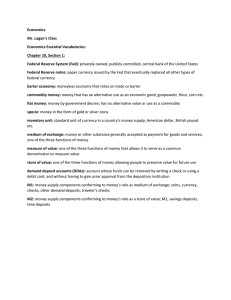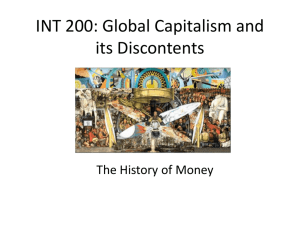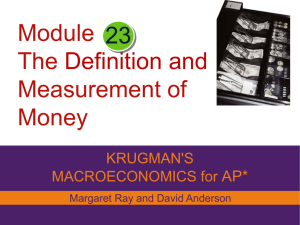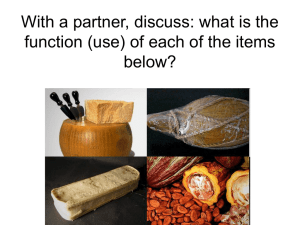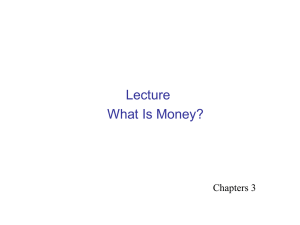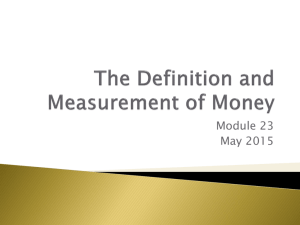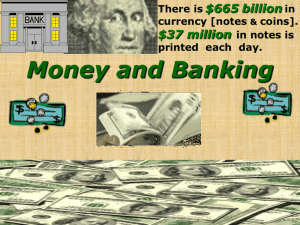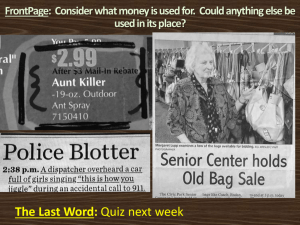The Evolution, Functions and Characteristics of Money
advertisement
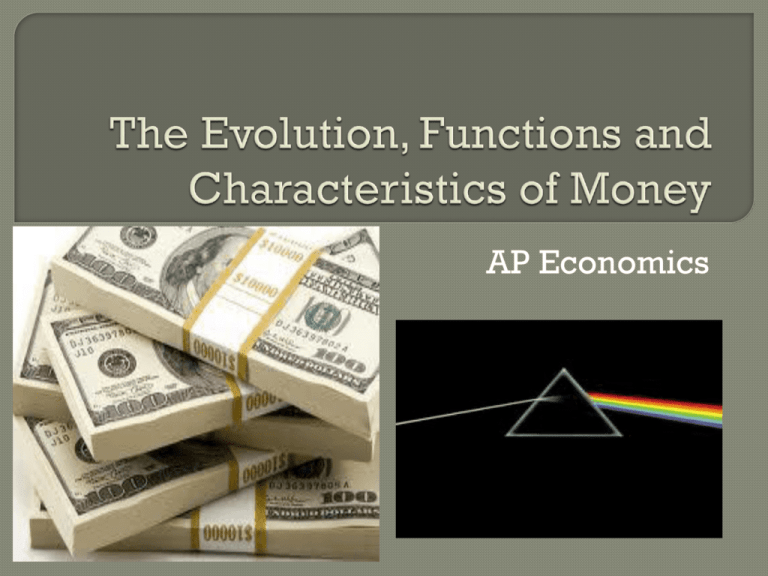
AP Economics Barter Economy-moneyless economy that relies on trade or barter Problemsproducts some people offer are not always acceptable or easy to divide for payment Benefits“mutual coincidence of wants” when two people want exactly what the other has and are willing to trade what they have for it Early Societies developed forms of protomoney which were commodities that everyone agreed to accept in trade Examples: Aztecs-Cacao Beans (aka cocoa beans) Norwegians-Butter Colonists- Tobacco leaves, animal hides China, India, Thailand, and West Africa-Cowrie shells If we did not have U.S. currency today, what do you feel we as a society could trade as proto-money? Commodity Money- money that has an alternative use as an economic good, or commodity Fiat Money- money by governmental decree Both fiat money and commodity money were used in the original thirteen colonies. • Commodity money in America was used to settle debts, make purchases, or for personal consumption • In Massachusetts the local government gave wampum shells a monetary value Early paper money was backed by gold or silver deposits, served as currency for immediate area States printed money in form of tax anticipation notes which were used to pay salaries, buy supplies and meet other expenditures until they received taxes and redeemed the notes 1775 Continental Congress printed money that was not backed by gold or silver Issues?? Specie- money in the form of gold or silver coins Most desirable form of money because of mineral content, and limited supply 1776 there was $12million dollars worth of coin vs. $ 500 million in paper money Portability- can be easily transferred from one person to another, and makes the exchange of money for products easier Durable- does not deteriorate when handled and can be easily replaced Divisible- should be able to be broken down into smaller units so that people can use only as much as needed for a transaction Limited Supply- can not have to much of something because then it becomes worthless Portabilitylight weight, convenient, easily transferable DurableCoins tend to last over 20 years, and paper currency lasts 18 months in circulation before being replaced DivisiblePenny is small enough for almost all purchases, and can write checks for exact amounts Limited Supply/StabilityFluctuates, grew at a rate of 10-12 percent a year in 1970’s, but for the most part there is a stable and limited supply 1. Medium of Exchange- money or other substance generally accepted as payment for goods or services 2. Measure of Value- function of money that allows it to serve as a common way to express value ex. Price Tags 3. Store of Value- allows people to preserve value for future use This allows a period of time to pass between earning and spending an income M1- component of the money supply relating to money’s role as a medium of exchange • Currency (Coins and Paper Money) • All checkable deposits (travelers checks, DDAs/ checking account) M2- component of the money supply relating to money’s role as a store of value • Savings (savings deposit & money market deposit account) • Small time deposits (6 mo. CD) • Money market funds (mutual fund) Prior Knowledge – what back’s today’s currency in the U.S.? It is not gold and silver!- Today, the GDP helps back our money & its relative scarcity (this is why counterfeiting currency is a federal offense for a fine of up to $250,000 and a prison sentence of up to twenty years for the counterfeiting of U.S. obligations and securities (and no you can’t pay in counterfeited money you made) The FDIC backs our deposits today up to $250,000 (M1 / M2)
